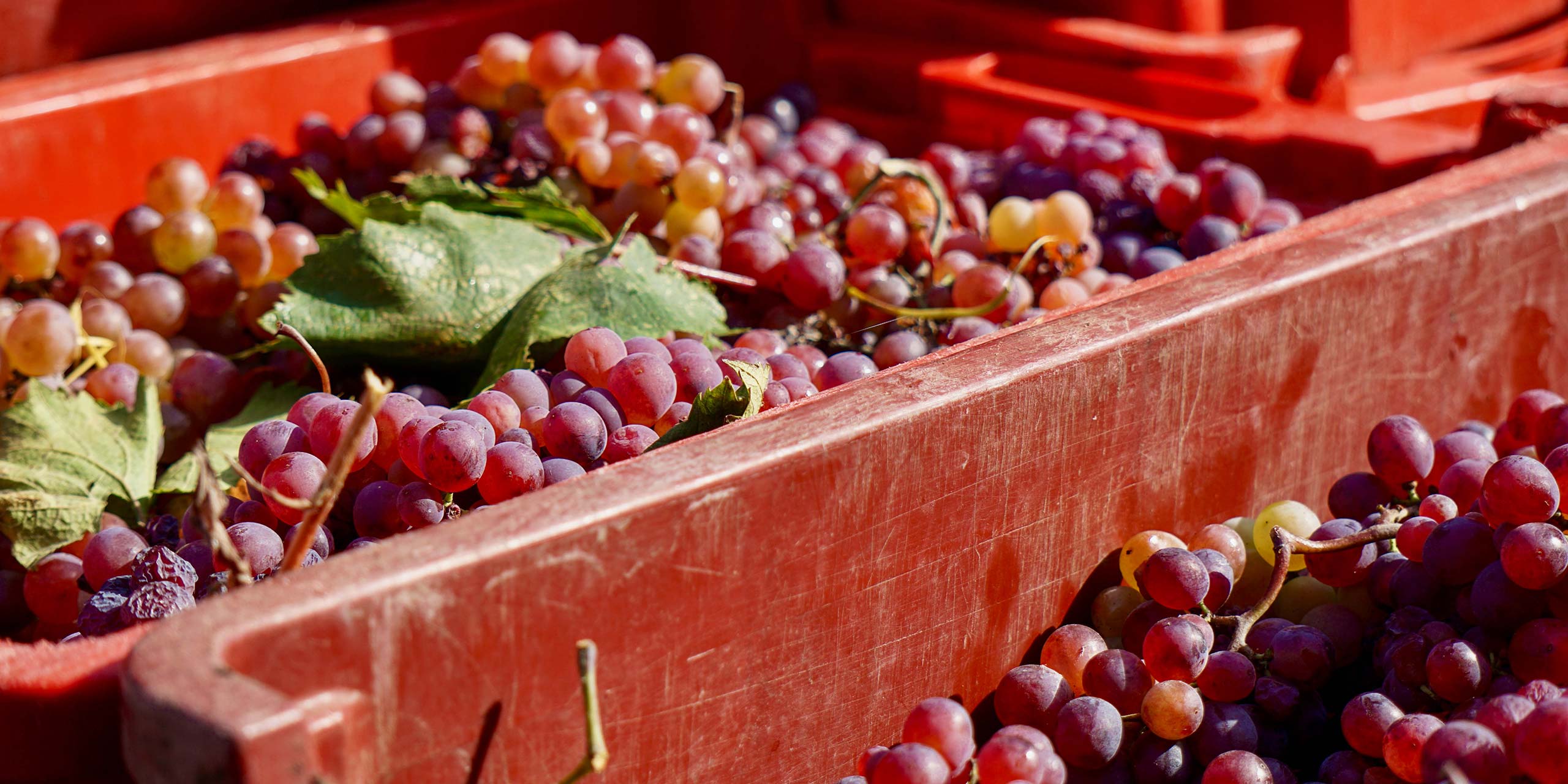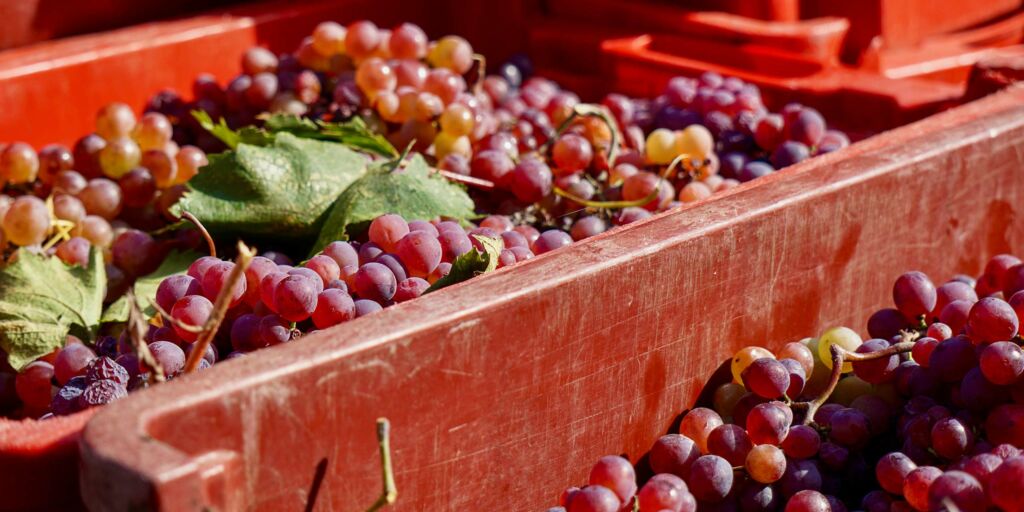
The first toast, per custom, was to God. Moments later, Gela Patalishvili began another. This one was to peace. Glasses were emptied, wine was poured, and more toasts ensued.
We drank to Georgia, Sakartvelo, the motherland. We drank to the harvest. We drank to guests. “Anyone who helps us make wine will always be welcome,” Patalishvili declared.
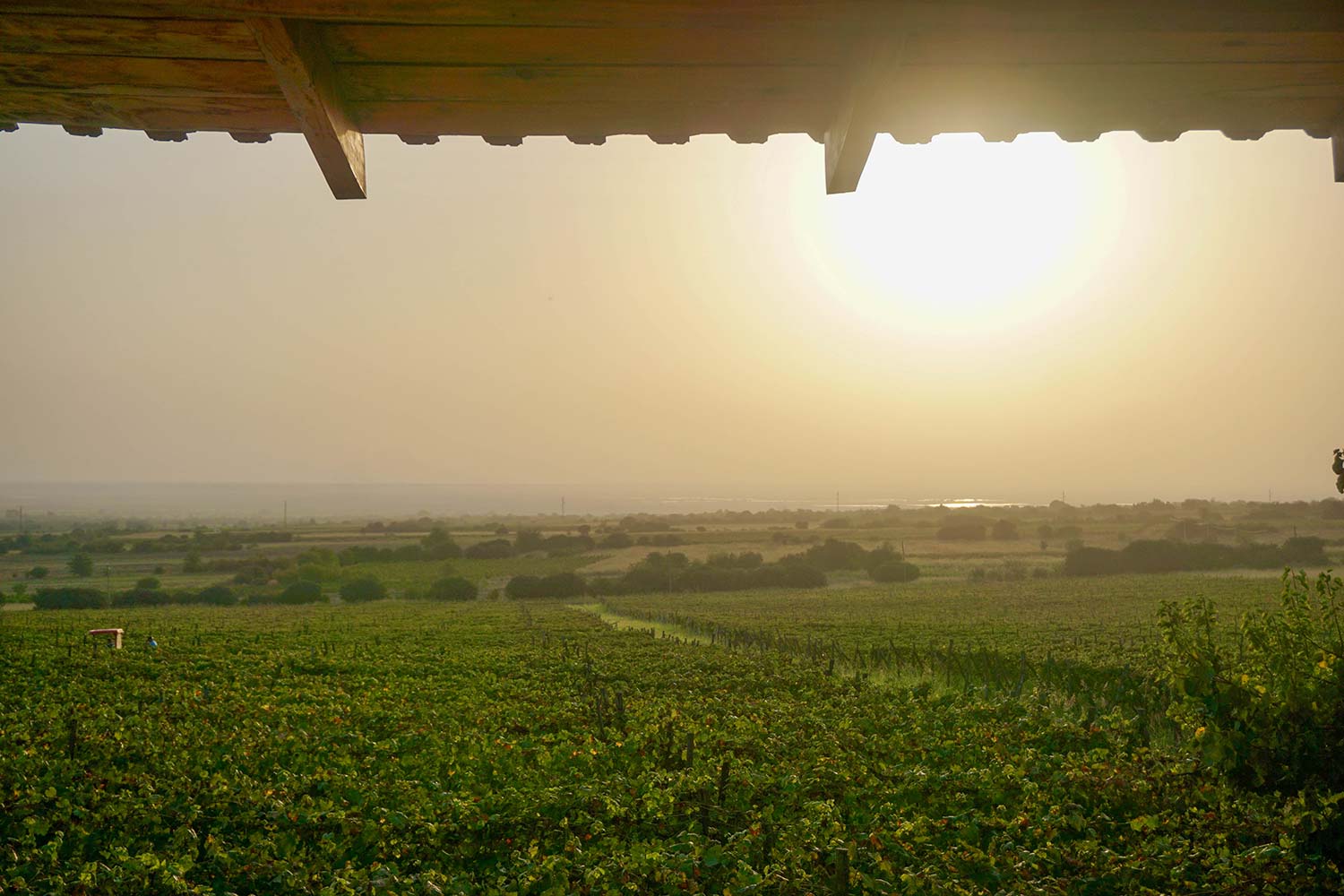
I had come to Kakheti burned out, dreaming of plunging my hands in the dirt and divorcing myself from breaking news and deadlines. I knew the harvest was happening soon, so I asked a friend who distributes Georgian wine overseas to connect me with one of his partners. He introduced me to John Wurdeman, Patalishvili’s co-founder at Pheasant’s Tears. The same day, I was hitching a ride to their winery outside the cobblestoned village of Sighnaghi, two hours east of Tbilisi.
The experience was better than anything I could have imagined.
After a day in the fields, I stumbled into my first supra, the traditional feast Georgians have practised for centuries. The ritual celebrates nearly every social event—life, death, friendship, even the seemingly straightforward process of picking, juicing, and fermenting grapes—with a formal procession of tributes led by a tamada, or toastmaster. In this case, it was Patalishvili leading our table of winery workers and volunteers through a rapid-fire succession of raised glasses.
While the rest of us floated on a sea of amber wine, the Kartvelian vigneron remained solemn.
“To our ancestors, whose blood nourishes the soil that grows our grapes,” he bellowed. “Although we will never match their sacrifices, we honor their legacy by making the best wine possible.”
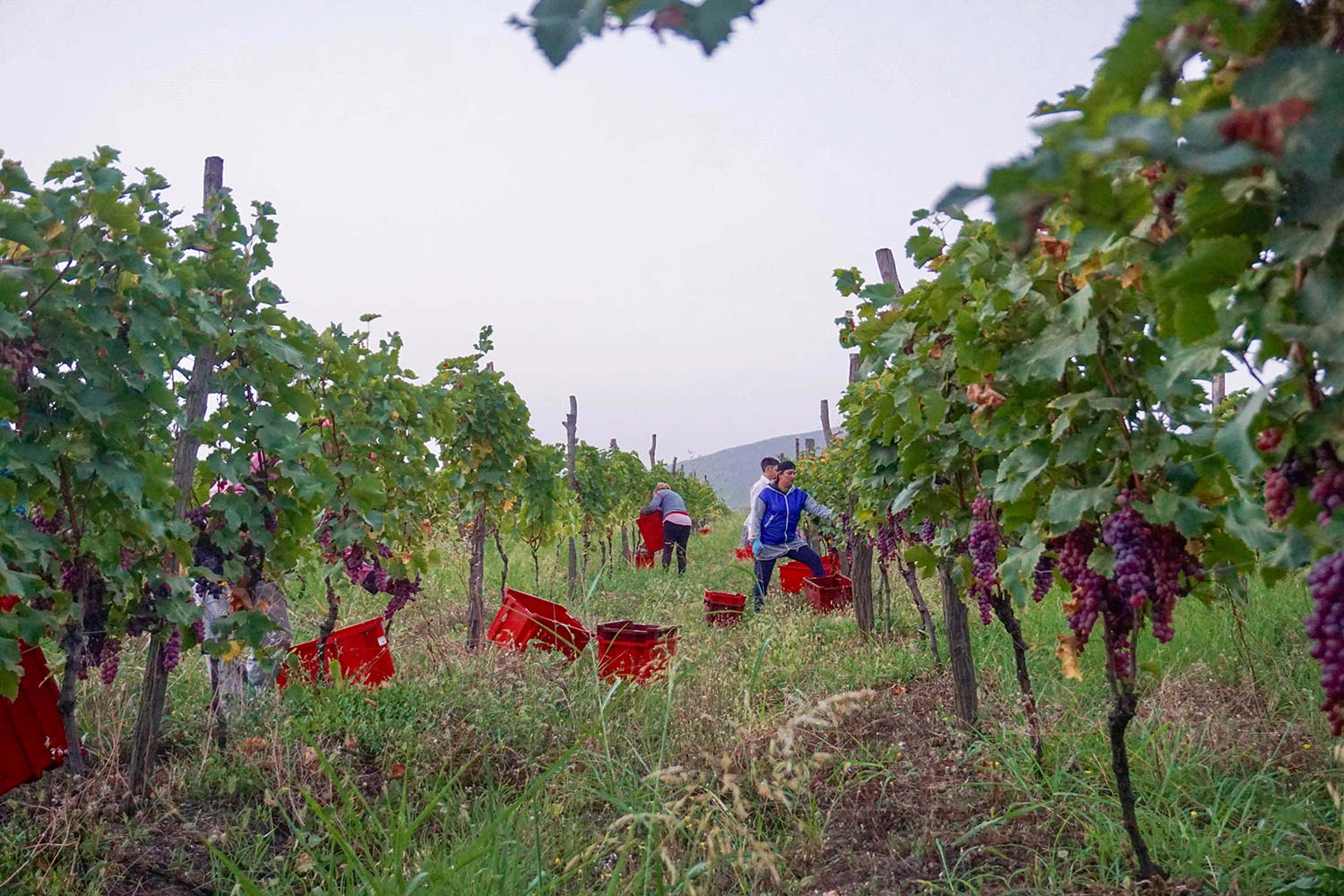
If the supra is the invisible hand that guides social life in Sakartvelo, this one reached into my chest and tugged at the heartstrings. Until, as suddenly as it began, it was over.
An old winery employee clapped his hands and cackled through his teeth. “Can you feel the love around this table?” Then he downed what remained of his chacha—a grappa-like spirit that can turn supras into spectacles—and pounded his chest.
It was time to get back to work. The wine wasn’t going to make itself.
I had arrived the night prior and sat down to a feast with fellow volunteers. The table overflowed with lobio, slow-cooked beans with chopped herbs; chakapuli, a lamb stew with tarragon leaves; sheep’s cheese from mountainous Tusheti; shoti bread served with sunflower oil and salt; khachapuri; tkemali, sour plum sauce; and, of course, wine.
I was joined by a sommelier from Copenhagen’s Bobe restaurant, a brewer between projects in Portland and Belgium, a documentary filmmaker profiling natural winemakers, and Wurdeman, an American painter who came to Georgia in 1998 and never left.

In 2007, he opened Pheasant’s Tears with Patalishvili, a vintner who shared his love for Georgia’s folk culture, biodiversity, and wines. They have since become legendary figures for catalyzing a revival in the country’s traditional viticulture and forgotten grapes.
The tannic, mineral-rich wine Pheasant’s Tears produces is often reduced to the word “natural,” but that doesn’t do Georgia’s 8,000-year-old winemaking heritage any justice. Staying as true to tradition as possible, the winery grows grapes without chemicals fermenting them along with the skins and stems in qvevri, the womb-like underground amphorae Georgians have fermented wine in for millennia. There, the wine ages for days, weeks, or months on skins before it’s bottled. The process gives white wines a color ranging from light orange to amber, and it lends red wines strong tannins and deeper complexity.
For Georgians, this is the way wine had always been, until the 20th century. When Patalishvili and Wurdeman started producing wine, Georgian wine traditions had gone dormant.
Under Soviet rule, from 1921 to 1991, qvevri and winemaking were collectivized. Steel tanks replaced clay amphorae. The use of the country’s 525 native grape varieties was reduced to two: Rkatsiteli (white) and saperavi (red). Across Kakheti, where Pheasant’s Tears is located, factories churned out sweet wines for the Soviet bloc made from those two grapes exclusively.
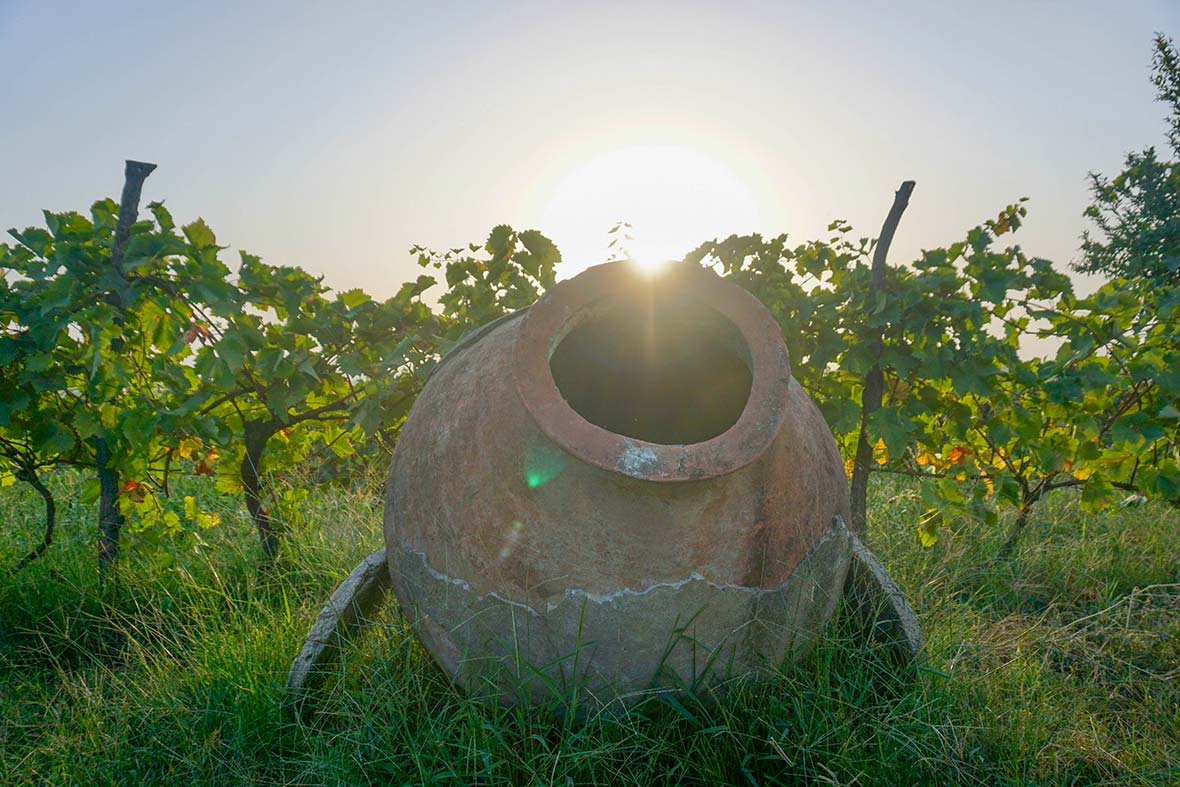
By the time Pheasant’s Tears opened, there were only a few artisanal qvevri-makers left. “There wasn’t any demand for them,” Wurdeman said. And the wild vines had been tamed, too.
Just 20 years ago, the only grapes anyone grew at scale in Khakheti were still rkatsiteli and saperavi. So Patalishvili and Wurdeman went searching for others. They visited families across the country, made clippings, and brought them back to life.
Resurrected varietals include kisi, tsolikauri, chkhaveri, chinuri, shavkapito, goruli mtsvane.
“The only people making wine from many of these grapes were families who grew them in their backyards,” Wurdeman told me.
As interest in natural wine has surged globally, so has Georgians’ pride in Kartvelian traditions. Qvevri-making has emerged from the underground, perhaps preserved for good on the UNESCO Intangible Cultural Heritage list, and more than 500 native grapes are growing again. Pheasant’s Tears even makes a wine every year—called Poliphonia in a nod to the country’s polyphonic singing—that incorporates more than 100 of them.
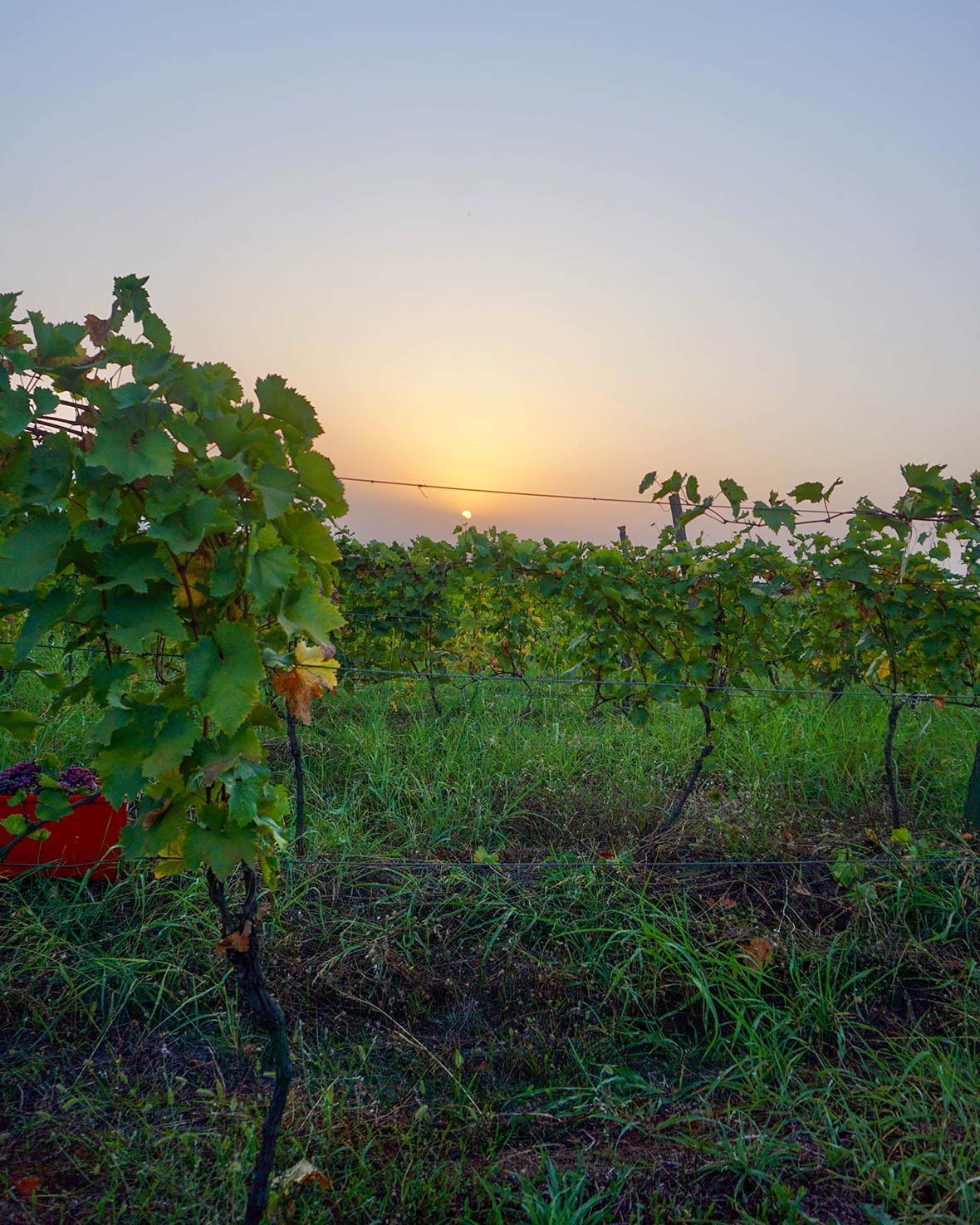
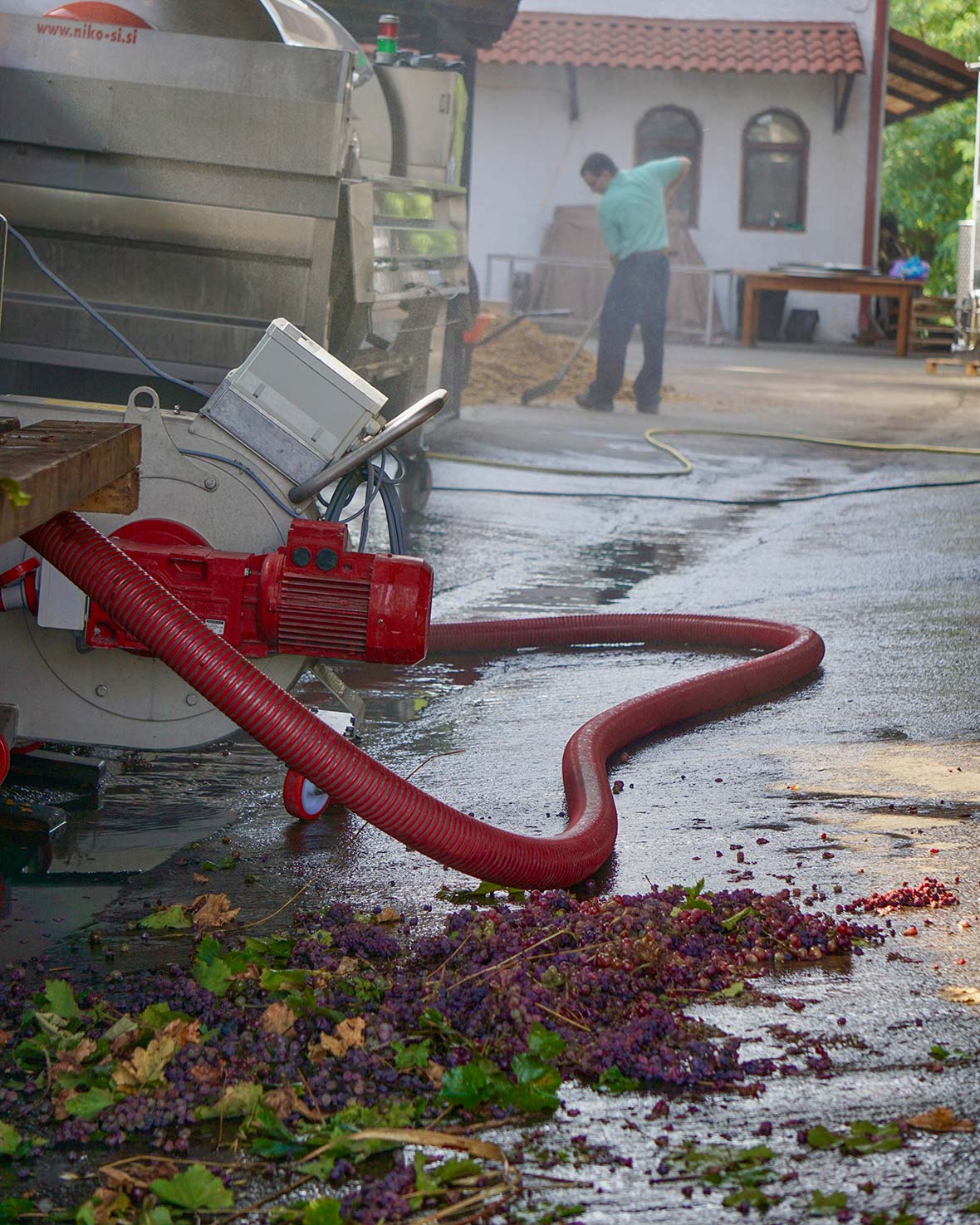
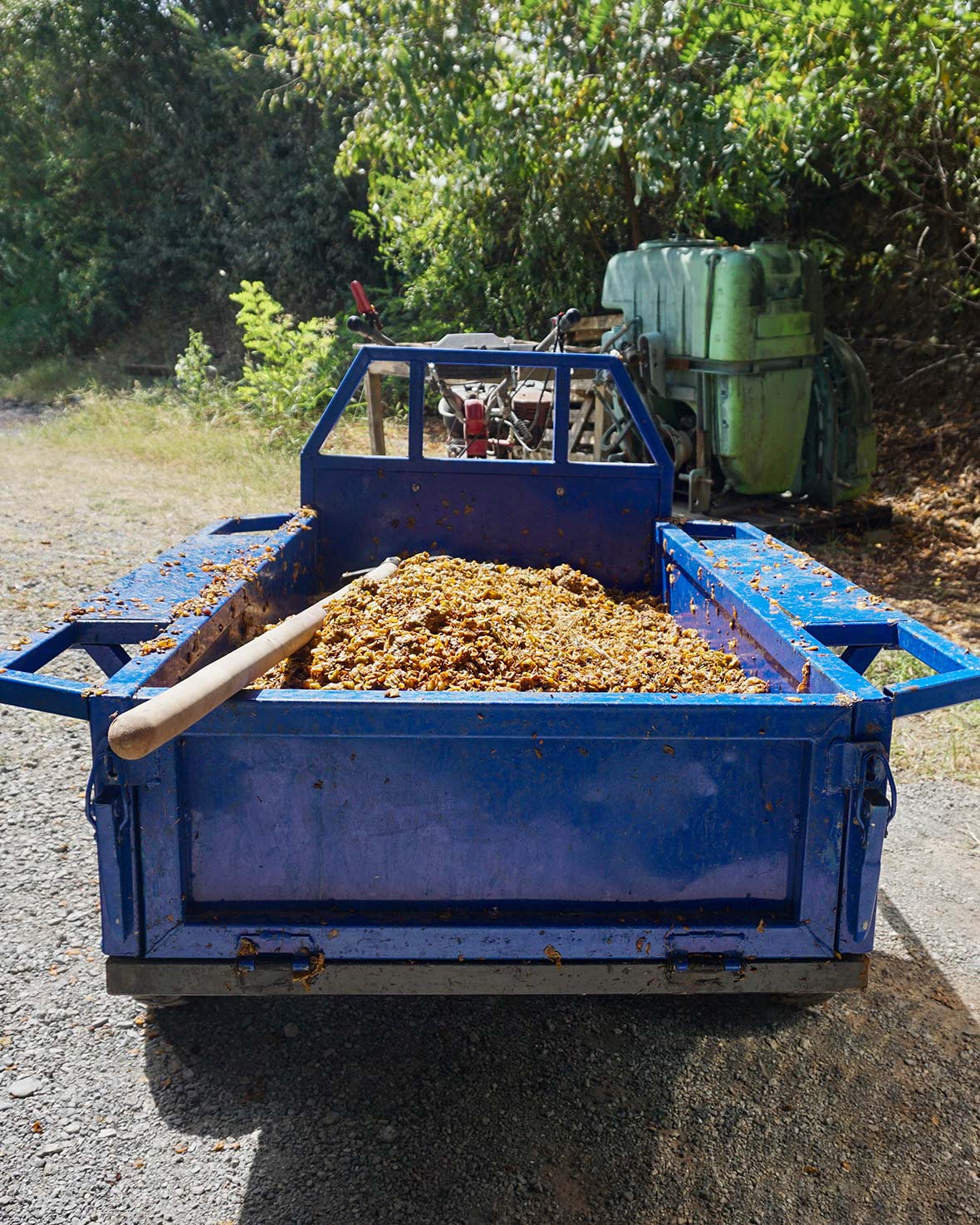
At the winery, I got my hands on one fruit of this renaissance: vardisferi, or pink rkatsiteli.
“It’s a genetic mutation,” Wurdeman told me as we ventured out into the vineyard shortly after dawn, the morning mist framing the Caucasus Mountains in the distance. “Every now and then, some rkatsiteli grapes will turn red. I’m not sure anyone knows why.”
About nine years ago, Wurdeman made some vardisferi clippings, planted a few rows, and produced about 200 bottles. He decided to bring some of the pinkish, fruit-forward wine to la Dive Bouteille, an industry-only natural wine fair held annually in the Loire Valley. Buyers took almost all of them. Including the wine procurer for Copenhagen’s Noma.
“I was hoping to hang onto them for my restaurants,” he lamented. Since then, Pheasant’s Tears has added dozens of rows of vardisferi so they never run out again.
In the fields, I treated these resurgent grapes like porcelain eggs. The local pickers noticed. They had swept through the rows, stripping vines like a swarm of friendly locusts. One of the younger pickers suggested I “take a rest,” so I decided it was time to try my hand at the simpler task of sorting them.
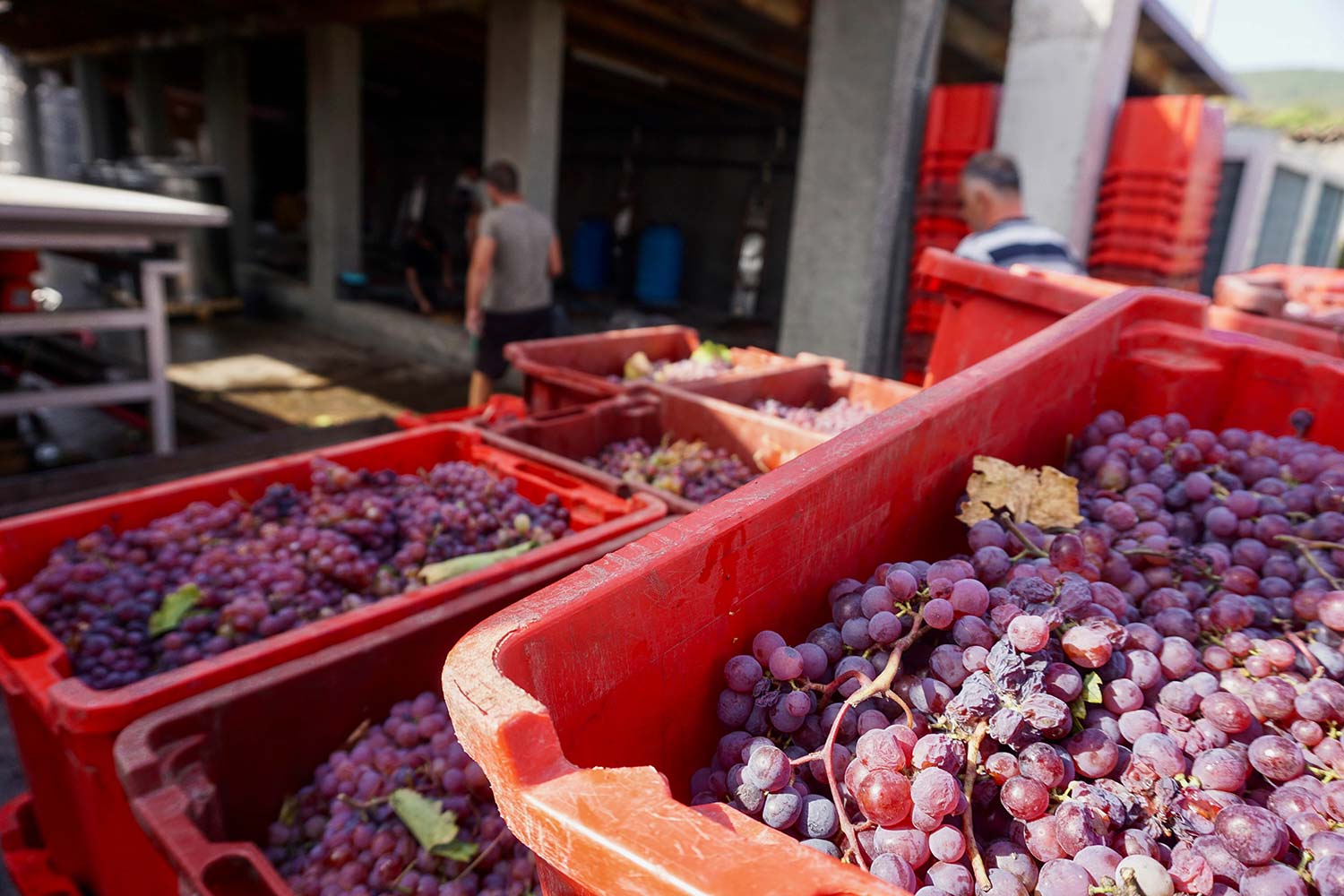
Forklifts delivered bushels of grapes to a sorting machine by the cellars, where four of us labored like assembly line workers at the Ford factory. As box after box of vardisferi bunches rumbled down a steel belt, we removed branches and bad grapes and let the rest go into a mechanized juicer—one modern amenity Pheasant’s Tears allows itself in favor of squeezing them by foot.
While we sorted grapes, others cleaned the 2,000-liter qvevri. They descended into them like coal miners, shoveled pomace into buckets with the aid of headlamps, and passed them up to runners, who dumped their contents into other qvevri inside the cellars. There, with the aid of leftover grape juice, fermentation would start again. Once finished, the liquid would be distilled to make chacha.
Skins and stems that weren’t used for chacha became compost. The lees were sometimes used to make beer. Nothing was wasted.
We all toiled for hours. Even for temp hands like me, it was tiring. The full-time staff would labor like this throughout autumn, as would workers at all 1,500-plus wine producers in Georgia.
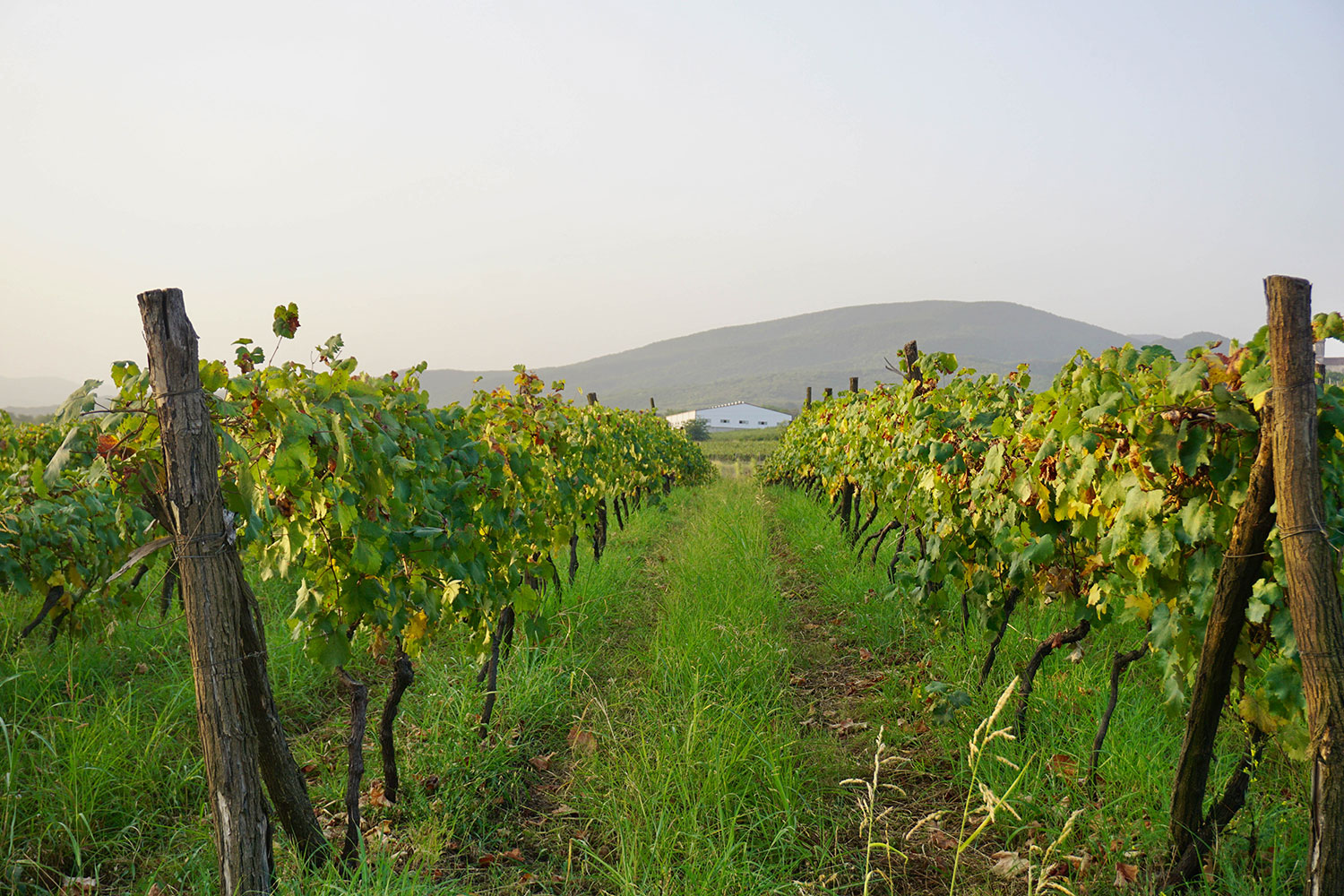
But the harvest, or rtveli as it’s called in Sakartvelo, is more than a job for them.
Every autumn, families, friends, neighbors—whole communities—come together to make their own supplies of wine, eat khinkhali (soup dumplings), prepare churchkela (strings of nuts covered in thickened grape juice), work the fields, sing, dance, feast, and celebrate.
The festivities are open to everyone. Georgians wouldn’t have it any other way. They know what the rest of us often forget: wine isn’t just a drink. It’s a living part of the land, the people, the culture.
“In Georgia, guests are gifts from God,” Wurdeman explained. “There will always be wine on the table for guests.”
Wine and food and sometimes chacha, all of it accompanied by toasts that seem to last hours.
I went to Khakheti to help produce wine, but I left with a lesson rooted in something deeper than the labor itself. Wine is never just made in Georgia. It’s shared.

